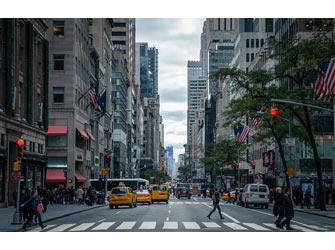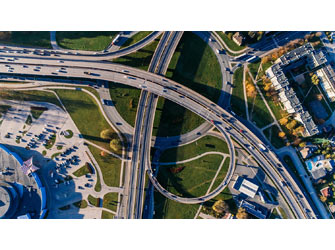Operating principles of tecar technology
Now let’s get a bit more technical
A typical inflammatory response comprises four components:
–inducers;
-the sensors that detect them;
-the inflammatory mediators induced by the sensors;
–effectors, namely the tissues targeted by the inflammatory mediators.
Inducers are generally the signals that initiate the inflammatory response and they can be classified as exogenous or endogenous. In the case of the building presented in the first part of this article, this would be the damage to the faà§ade and surrounding area.
Inflammatory inducers activate specialised sensors, which in the previous example could be compared to the CCTV system that triggers the initial notification. The sensors lead to the production of specific groups of mediators, which in turn, in the case of Singapore, could be compared to communications between the various specialist operators for coordination of the work. The inflammatory mediators can be classified in different groups according to their biochemical properties and may have different origins. They may, in particular, derive from plasma proteins or be secreted by cells. Some of them are in fact preformed and stored in the granules of specialist immune cells. Others are preformed and circulate as inactive precursors in the plasma. Yet others are produced directly only in response to appropriate stimulation. So, even in the organism on a microscopic level, every action and reaction is coordinated by complex communication between the various players in the inflammatory process and this communication mainly occurs via chemical means.
The final effectors in an inflammatory response are the tissues and the cells, whose functional states are specifically influenced by the inflammatory mediators. Going back to the example of the building, we could compare the effectors to all the damaged structures, the agents, workmen and the rest of the infrastructures involved in the repair work.
The response to certain inflammatory mediators is mainly ubiquitous, in other words it occurs throughout the tissues, even if different kinds of tissues and cells have specific, distinct effects. Generally, however, the most evident effect of the inflammatory mediators is to affect the state of local blood vessels, causing them to dilate, leukocyte extravasation (or leukocyte diapedesis) and release into the surrounding tissue of the plasma and the molecules it contains (such as antibodies, antimicrobial substances and other protein-based composite materials). In addition to this, the inflammatory mediators have equally important effects on neuroendocrine and metabolic functions and on maintenance of tissue homeostasis in general.
Quite simply, to ensure the prompt arrival of the specialised workmen at the site, close to the damaged tissue the human body follows precise procedures and uses specific means of internal communication to generate effects such as, for example, vasodilation, variation in temperature and variation in tissue permeability. You can imagine a leukocyte, more commonly known as white globule, leaving a capillary to reach the area of the damage like a policeman or specialised workman and who, having made his way through the city traffic, gets to the site, goes through the barriers and takes up position to carry out his job. Sirens, barriers, radio communications, temporary road signs, traffic diversions… Vasodilation, vasoconstriction, temperature, chemiotaxis, prostaglandin… Everything helps to achieve the aim.
Let’s talk about tecar again. What is it?
Why are we telling you all this? Weren’t we supposed to be talking about tecar? Be patient a little while longer… We’re getting there!
First of all, the previous examples help us to understand that the result, the efficacy and efficiency of the repair greatly depends on circulation. Just like in a city, where the materials, goods, specialised workmen, police officers and all those who play a role in maintaining the social structure move along high-speed communication routes, be they urban or pedestrian, so too does the body have a close-knit transport network that, to simplify things, can be compared to the circulation system, which in turn can be divided into the vein, artery and lymphatic systems. Unlike in a city, in the body circulation moves in one direction only, inside each vessel the flow is one way. A little like most of downtown New York!
The fluidity of this circulation, its capacity for prompt intervention to divert it when needed, the presence of access to the area needing repair, and a well-organised discharge system to remove from the area anything that might hinder the work are all factors that have a determining effect on the repair.
And at this point we can get back to the main topic of our article. Tecar technology stimulates the physiological reactions that we mentioned in the beginning: increased blood perfusion, vasodilation, increased temperature, increased cell proliferation. Backed by what we have thus far described, you can start to see how useful these reactions may be, if stimulated at the right time and in the right place, for aiding the hypothetical inflammatory and repair processes that are taking place in your poor little toe!
Let’s get this straight: the beauty of the human body is that, even if there was no outside help, the organism would find a way to repair the damaged tissues and restore homeostatic equilibrium to the area. It is also true that certain factors may considerably help in accelerating the time required for this process and in improving the quality of the result.
The increased blood perfusion can be used to increase the supply of oxygen and nutrients in the blood. If the fuel and the repair material get to the site more easily, this may be an advantage for the work.
Vasodilation stimulated in focused areas can be used to facilitate the removal of inflammatory catabolites or other waste material. If the exit roads from the site towards the waste disposal plants are wider, it is easier to remove the debris and anything no longer needed faster, improving the workmen’s efficiency. The increase in temperature can be used to reduce the resistance of the tissues, increase their flexibility and help metabolic activity. If one stage of the work involves removing a damaged structure or improving the mechanics of other parts, heat energy can be an optimum ally.
Finally, the stimulation of cell proliferation can aid in increasing the quality of the functional tissue repair process, namely the set of cells that carry out a certain task in a certain organ. Another extraordinary characteristic of the organism is that most of its tissues are able to self-regenerate when conditions permit.
To go back to the example of the work site, it is as if some of the bricks and parts of the building were able to reproduce themselves or be produced directly on site. A stimulus that increases this phenomenon in a focused way can accelerate completion of the repair work.
Put like this it sounds like: let’s do as much tecar as possible so our little toe problem clears up in an instant! Hold on! The cause-effect relationships in a human organism are very complex and achieve the correct conclusions we must start with a good knowledge base. Tecar technology is classified as medical device for a good reason and it must be used by specialised personnel and, in most cases, be prescribed by a doctor.
While being a precise piece of equipment, the dimensional scale of the reactions it stimulates is very different to that of the individual phenomena that occur as part of the inflammatory process.
If we imagine being the size of a white globule and being in its place, travelling along the arteries that lead to the inflamed spot in your little toe, vasodilation of a tenth of a millimetre of the calibre of the plantar digital arteries, where you have just put on your indicator to take the next exit towards the capillaries, would be the equivalent of seeing 6 more lanes materialise on the road while you are travelling to Beijing along the China National Highway 110, one of the widest and busiest roads in the world.
This example brings attention to the fact that the reactions that may be stimulated from the outside by physical therapy equipment like tecar, while precise on a macroscopic scale, may generate huge changes at cell level. Given that homeostatic tissue equilibrium is based on complex microscopic mechanisms, any external macroscopic stimulus must be guided carefully and skilfully.
For example, the increase in temperature may be very useful in some stages of the treatment while being counterproductive in others. Going back to the example of your little toe, an increase in temperature along the calf may be helpful in reducing muscular tension accumulated following the pain in the foot. This will bring relief and greater flexibility to the structures mechanically connected to your toe. Whereas, the same increase in temperature, stimulated directly on the painful little toe, would not have the same benefit. On the damaged tissue where the inflammatory process is ongoing it would in fact be more useful to stimulate cell proliferation without a marked increase in temperature. The ratio of this can be found in studies analysing the effects of temperature on cell proliferation, which show that optimum proliferation occurs at around 37 °C, and starts to become less efficient over 37.5 °C, stopping at temperatures exceeding 40 °C. If you are curious to learn more, see “Effect of Temperature on the Proliferation and Viability of Normal and Malignant Human Cells in Culture*â” (Hideo OKUMURA et al. 1979).
The importance of the therapist. How would an expert behave?
Here, yet again, we are merely giving a theoretical example. In order to provide real treatment, a specialist would take many other variables into consideration when deciding how to best apply the therapy. They would consider the doctor’s indications regarding diagnosis. They would evaluate the functional state of the kinetic chain affected by the problem. They would try to understand towards which stage of the inflammatory process the area in question is headed, and so on. In other words, being a good specialist is anything but simple. We can, however, confirm that thanks to simple training, a good specialist who correctly interprets tecar technology will quickly see their therapeutic results improve.
Another fundamental concept that must therefore be understood is that the quality of results of tecar technology therapy depends a lot on the competence of the operator.
But what impact do the specific characteristics of the equipment have on the quality of the result?
It’s not as if all tecars are same! Why?! Well, do all cars offer the same performance?
But we will talk about this in the next article…
To go back to the first part of the article click here.
Like all the content we produce with the support of our technical committee, this article is not intended to give medical recommendations or be used as an alternative to a doctor’s opinion. It simply aims to provide initial information about issues linked to health and the technologies and programmes we develop. For an in-depth medical opinion, please see a doctor specialising in your problem.









